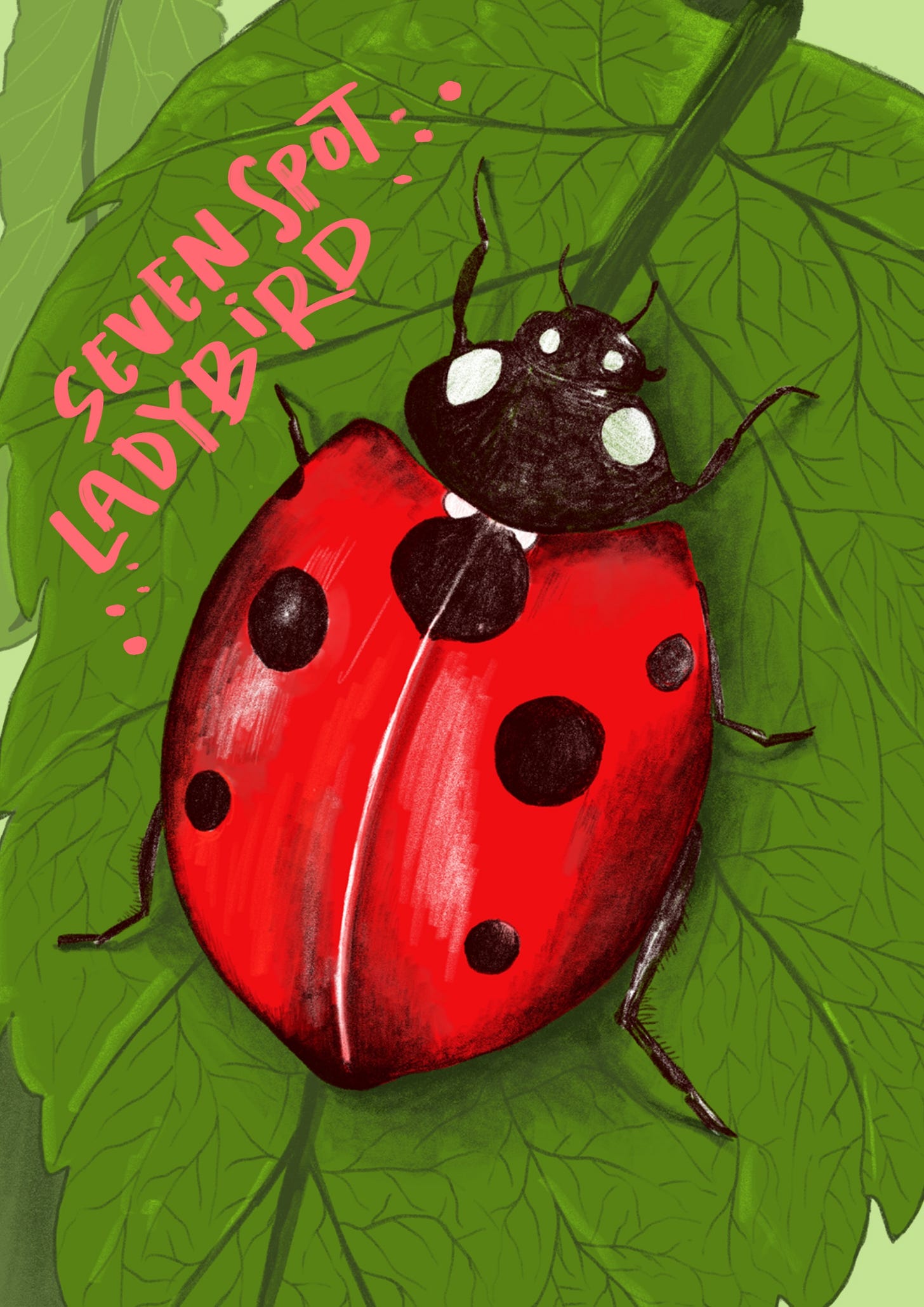Well, if you followed me on Instagram specially to see the hundred day project this week you’re sure to be disappointed, as I have been horrifically forgetful about posting my daily field notes. And if you didn’t read the newsletter on Monday you won’t know what I am talking about, but you can catch up, if you like.
Rest assured, I have been keeping up my 100 Days of Notes from the Field, I just forget the final stage… sharing… but the whole point of a hundred day project is to build (rebuild, in this case) a habit, so I will get better, I promise!
Garden Adventures
We’ve not been exploring very far afield this week, mostly in our own front garden (we = me + the Lab Assistant a.k.a. toddler. To be honest, there’s little that gets done without him at the moment). But it has been an absolute delight, as we have encountered an absolute glut of ladybirds! We’re also keeping an eye on a very large poppy, and enjoying spying the bees.
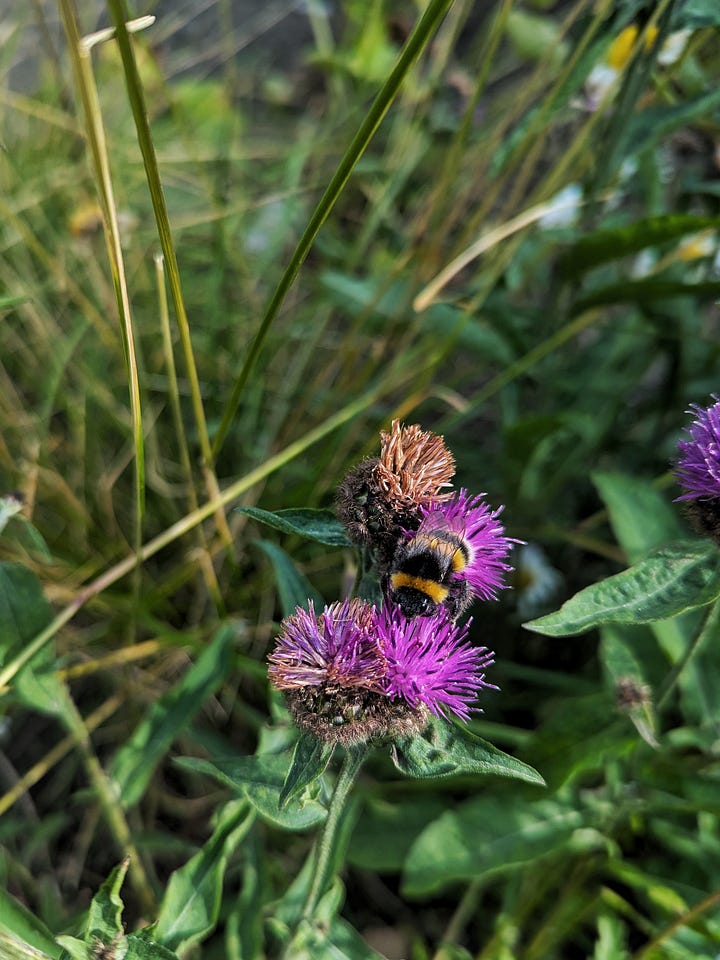
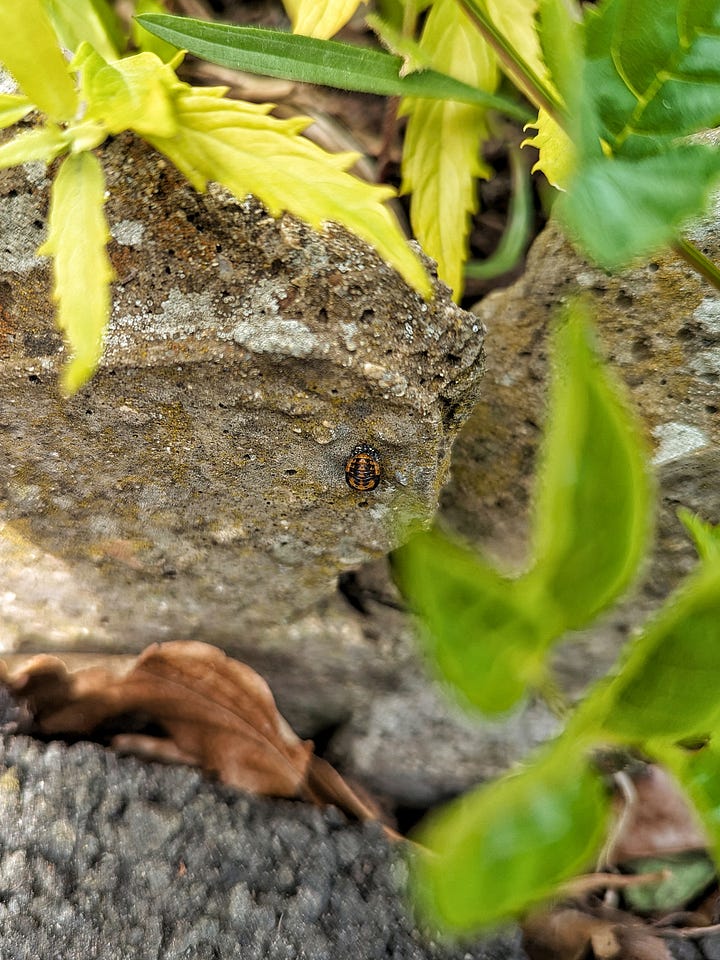
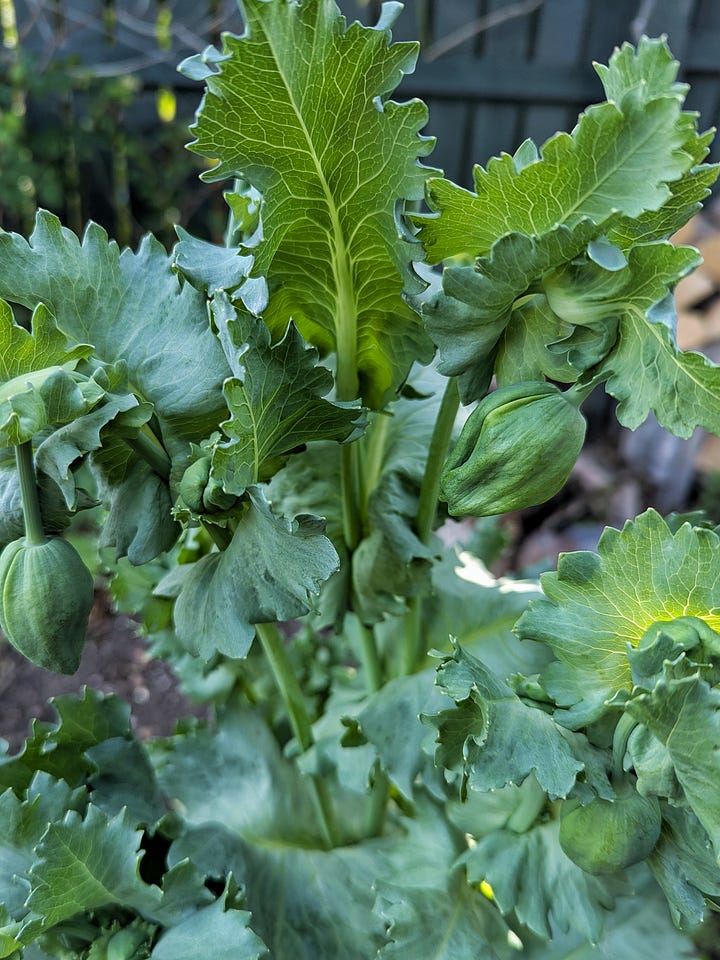
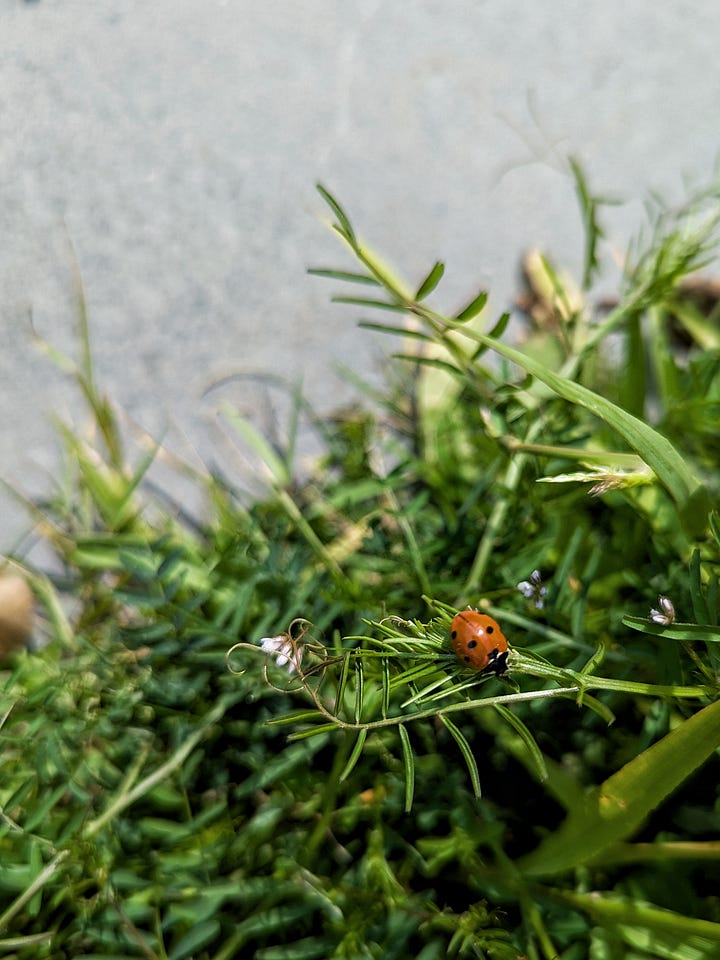
The Seven Spot Ladybird
The seven spot is our most common ladybird. Assuming I’m counting correctly, that’s what’s taken up residence in our front garden, which is a burgeoning wildlife meadow that I’m very proud of even although I had nothing to do with its existence and actively avoid involvement in its maintenance.
I did not know until a few years ago that ladybirds (and all beetles. All of them.) start out as a terrifying-looking larva. There were loads of them in our garden the first year we moved in to this house and I was concerned we were infested with something truly horrible… but then they all congregated on a brick wall, pupated, and we had enough ladybirds to keep our aphids at bay and it was glorious.
Adult ladybirds hibernate over winter, sometimes all clumped together in a wee group. They like hollow plant stems, curly dried leaves and insect boxes, as if you needed another reason to install one. When they wake up, in Marchish, they lay eggs, which turn into those evil-looking larvae. They go on to pupate and emerge as fully grown ladybirds, ready to take on the summer, tasting horrible to birds and excreting a disgusting-tasting yellow substance (a form of controlled bleeding from their joints) if they’re really threatened. They eat primarily aphids… but they will eat a selection of other insects, eggs and larvae too, also the occasional bit of pollen and nectar.
Lastly, one for my beloved accountability buddy, these shiny little gems of a beetle are the designated national insect of Finland.
The illustration is taken from a print created in collaboration with Luing Smith (there is the most amazing jewellery that accompanies it). I have a wee stash of digital prints and stickers which will be listed on the website as soon as I find the time, but you can always get in touch if you’d like one before I get them up there.
Lastly, if you made it this far you get to know that clockleddy is Scots for ladybird. I do not know the etymology for the Scots but their scientific name is Coccinella (septempunctata, for the seven spot) which comes from the Latin coccineus, meaning scarlet.



